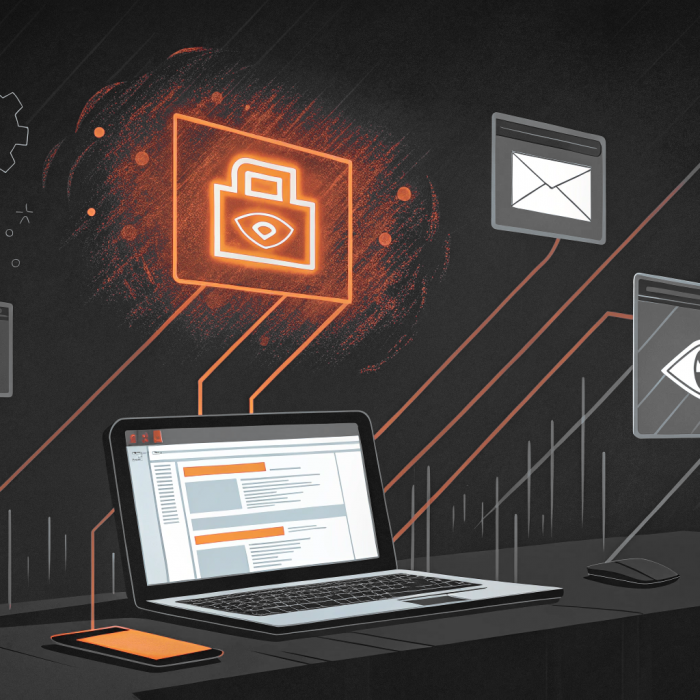Imagine this: You wake up, grab your coffee, and start your day like any other. But somewhere, in the dark corners of the internet, a hacker has just gained access to a privileged account on your network. From that moment, the clock starts ticking, and your business is teetering on the edge of a digital disaster. Are you aware of just how quickly this intruder can bring your entire network to its knees? Keep reading to learn what happens when hackers gain privileged account access.
The Reality of Privileged Account Vulnerabilities
Privileged accounts are the main attraction of your network. These are the accounts with elevated permissions that control critical systems, access sensitive data, and manage the infrastructure of your business. In the hands of a hacker, these accounts are not just valuable; they are game-changing.
Hackers know this all too well. They employ various methods to gain access, such as phishing attacks, exploiting software vulnerabilities, or leveraging insider threats. According to a Forrester research study, 74% of data breaches involve access to a privileged account. Once inside, a hacker can move with alarming speed and precision.
The Timeline of a Network Infiltration
Let’s break down what happens when a hacker gains access to a privileged account. Picture a company with 1000 endpoints—a modestly sized business. The hacker, now inside the network, follows a methodical process to expand their reach and deepen their control.
Hour 1: Initial Access and Reconnaissance
The hacker establishes a foothold and begins to explore the network. They identify critical systems, locate valuable data, and map out the network architecture. This reconnaissance phase is swift and often automated, taking mere minutes to complete.
Hours 2-4: Establishing Persistence
To ensure they can return to the network, the hacker installs backdoors and creates hidden accounts. This persistence ensures they maintain access even if the initial vulnerability is discovered and patched.
Hours 5-8: Privilege Escalation
Next, the hacker uses their foothold to escalate their privileges, gaining access to more sensitive systems. They might exploit additional vulnerabilities or use stolen credentials to elevate their permissions.
Day 1-2: Lateral Movement
With elevated privileges, the hacker begins to move laterally across the network. They compromise additional systems, search for high-value data, and potentially install malware or ransomware. This phase is critical for expanding their control and maximizing the damage they can inflict.
Day 3-4: Data Exfiltration
The hacker now starts to extract data. They might steal intellectual property, financial records, or personal information. Data exfiltration is often done in small, discrete batches to avoid detection.
Day 5 and Beyond: Full-Scale Attack
At this point, the hacker has full control. They can disrupt operations, encrypt data with ransomware, or even destroy critical systems. The impact can be catastrophic, both financially and reputationally.
The Broader Impact of an Attack
The consequences of such an attack are profound. Financially, the costs can be staggering—ransom payments, regulatory fines, and the expense of restoring systems. Reputationally, the damage can be irreparable. Customers lose trust, partners pull away, and the brand is tarnished.
Think back to the infamous attack on Sony Pictures in 2014. Hackers gained access through a single compromised account and wreaked havoc, leaking sensitive data and crippling the company’s operations. The financial and reputational damage was enormous, serving as a stark reminder of the risks posed by privileged account breaches.
Strategies for Cyber Resilience
So, how can businesses protect themselves from such devastating attacks? The key lies in robust cyber resilience strategies:
Access Controls and User Permissions
- Implement strict access controls to limit who can access sensitive systems.
- Regularly review and update user permissions to ensure only necessary privileges are granted.
Monitoring and Detection
- Use advanced monitoring tools to detect suspicious activity.
- Implement anomaly detection systems to identify unusual behavior indicative of a breach.
Privileged Access Management (PAM)
- Utilize solutions like Admin By Request PAM to lock down privileged accounts.
- PAM helps detect and prevent suspicious activity, such as lateral movement attempts.
- This ensures that even if a hacker gains initial access, their ability to escalate privileges and move laterally is significantly hindered.
Regular Audits and Compliance
- Conduct regular security audits to identify and address vulnerabilities.
- Ensure compliance with industry standards and regulations to maintain robust security practices.
When Hackers Gain Privileged Account Access
The Threat is Real, and the timeline is terrifyingly short. From the moment a hacker gains access to a privileged account, your network’s integrity is under siege. The speed and sophistication of modern cyber attacks mean that businesses must be vigilant and proactive in their defense strategies.
To safeguard your organization, it’s imperative to invest in comprehensive security measures. Implementing solutions like Admin By Request PAM can be a game-changer, providing the necessary controls to prevent, detect, and mitigate the impact of cyber attacks.
Don’t wait for a wake-up call. Act now to protect your network from the silent invaders lurking in the shadows. Book a demo with Admin By Request today and take the first step towards securing your digital fortress. Stay vigilant, stay secure, and never underestimate the power of a single privileged account in the hands of a hacker.






